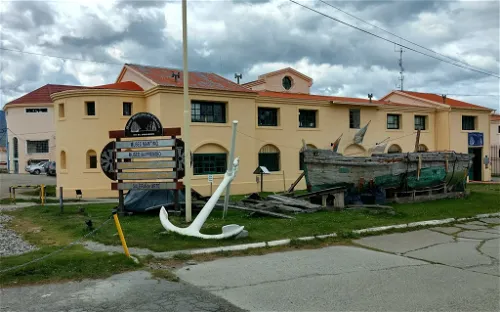Museo Marítimo de Ushuaia and its collection
The Museo de Arte Marino Ushuaia (MAMU) is a unique museum that focuses on marine-themed art. This includes works by artists who define themselves as 'marinists' or 'port artists', as well as others who have created works on the theme of water or fishing. This thematic focus provides a comprehensive and balanced view of the development of marine art in Argentina, from 1889 to the present day.
Location and Surrounding Museums of Museo de Arte Marino Ushuaia
The Museo de Arte Marino Ushuaia (MAMU) opened its doors to the public on December 12, 2006. It is located within a museum complex that also includes the Maritime Museum of Ushuaia, the Presidio Museum, and the Antarctic Museum Alférez José María Sobral. This location not only offers a unique marine art experience but also provides visitors with the opportunity to explore other historical and cultural aspects of Ushuaia.
Art Collection at the Museo de Arte Marino Ushuaia
The collection of the Museo de Arte Marino Ushuaia (MAMU) includes notable works by classic artists such as Benito Quinquela Martín and Fortunato Lacamera. In addition, the museum also showcases pieces by contemporary local artists like Alejandro Abt and Eduardo Nicolai. This blend of classic and contemporary works offers visitors a broad perspective on the evolution of marine art in Argentina.
Art & Design Science & Technology Contemporary art Modern art Maritime

